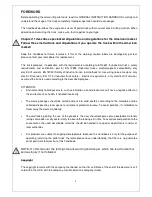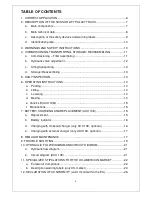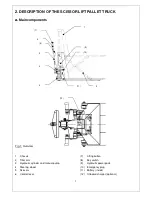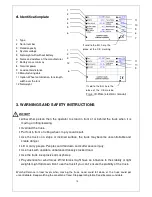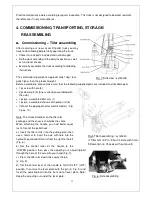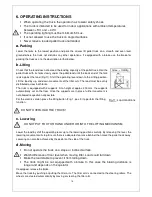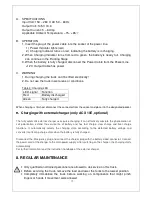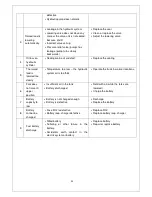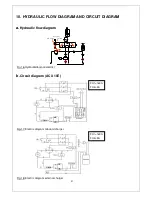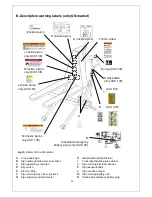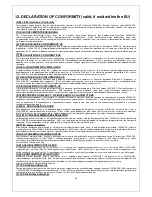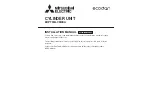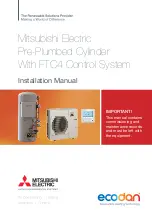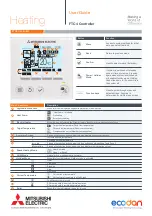
14
6. OPERATING INSTRUCTIONS
•
When operating the truck, the operator has to wear safety shoes.
•
The truck is intended to be used for indoor applications with ambient temperatures
b5
°
C and + 40
°
C.
•
The operating lighting must be minimum 50 Lux.
•
It is not allowed to use the truck on angled surfaces.
•
Never leave a loaded pallet truck unattended.
a.
Parking
Lower the forks to the lowest position and park the scissor lift pallet truck on a smooth and even level
ground where the truck not disturbs any other operations. If equipped with a brake use the brake for
parking the truck acc. to the description further below.
b.
Lifting
Check that the load does not exceed the loading capacity of the pallet truck. Roll the
pallet truck with its forks slowly under the pallet/load until the back end of the fork
rests against the load (Fig.11). Shift the operating lever down to the Lifting position.
Lift the load by up- and down movements of the tiller arm. The load must be evenly
distributed across both forks.
The truck is equipped with 2 supports. At a height of approx. 400 mm, the supports
automatically set on the floor. Once the supports are in place, further movement is
not allowed respective not possible.
For the electric version press the lifting button (Fig. 1, pos. 9) to perform the lifting
function.
DO NOT OVERLOAD THE TRUCK!
c.
Lowering
DO NOT PUT FOOT OR HAND UNDER OR INTO THE LIFTING MECHANISM.
Lower the load by shift the operating lever up to the lowering position carefully. By releasing the lever, the
lowering movement will stop. Ensure there is adequate clearance behind, then move the pallet truck away.
Lowering can also be achieved by the pedal on the side of the truck.
d.
Moving
•
Do not operate the truck on a slope or inclined surface.
•
Watch difference of floor level when moving lifter. Load could fall down
•
Make the load stable to prevent it from falling down.
•
The truck might be not equipped with a brake. In this case the braking distance is
longer and depends on the operator.
If equipped, release the brake.
Move the truck by pushing or pulling the tiller arm. The tiller arm is connected to the steering rollers. The
wheels are steered automatically by moving or steering the tiller arm.
Fig.11: Load conditions



